#Custom eCommerce Web Development
Explore tagged Tumblr posts
Text
In the fast-paced digital economy of 2025, a one-size-fits-all ecommerce solution is no longer sufficient. Businesses aiming for long-term growth and profitability must embrace tailor-made digital platforms that reflect their unique identity and address their specific customer needs. This is where partnering with a professional provider of ecommerce development services becomes essential.
Whether you're a local store looking to expand your online reach or an established brand aiming for seamless digital transformation, investing in custom ecommerce web development is the key to sustainable success. At Acuity Software Services, we specialize in delivering strategic, scalable, and innovative ecommerce solutions that align perfectly with your brand and business objectives.
To get more information about us, please visit: https://bit.ly/3GoQNzf
0 notes
Text
Unlocking Success:The Art Of Ecommerce Website Development
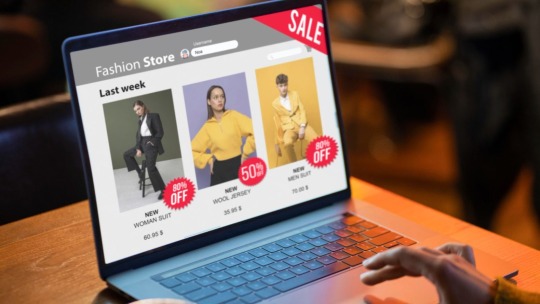
In the fast-paced world of online retail, having a robust and user-friendly ecommerce website is nothing short of essential. Whether you're a seasoned ecommerce veteran or just starting your digital retail journey, the development of your website can make or break your business. In this article, we'll delve into the key aspects of custom ecommerce web development and how it can pave the way for your online success.
The Foundation: Planning and Strategy
Before diving into the coding and design aspects of your ecommerce website, it's crucial to lay a solid foundation through careful planning and strategy. Here are some steps to consider:
Market Research: Start by understanding your target audience and their preferences. What are their needs, pain points, and shopping habits? This knowledge will help you tailor your website to meet their expectations.
Competitor Analysis: Study your competitors' websites to identify strengths and weaknesses. This can provide valuable insights into what works in your niche and where you can differentiate yourself.
Clear Goals: Define your business objectives. Are you looking to increase sales, expand your customer base, or enhance brand visibility? Your goals will influence every aspect of website development.
Building Blocks: Website Development Essentials
Now that you have a clear strategy in place, let's explore the essential components of ecommerce website development:
1. Choosing the Right Platform
Selecting the right ecommerce platform is crucial. Popular options like Shopify, WooCommerce, and Magento offer various features and scalability options. Consider your budget, technical expertise, and long-term goals when making your choice.
2. Responsive Design
With a growing number of consumers shopping on mobile devices, responsive design is non-negotiable. Ensure that your website looks and functions seamlessly on smartphones, tablets, and desktops.
3. User-Friendly Navigation
Simplicity is key. Design an intuitive navigation structure with well-organized categories and a user-friendly search function. Make it easy for customers to find what they're looking for.
4. Secure Payment Options
Security is paramount in ecommerce. Offer trusted payment gateways and implement SSL certificates to protect customer data. Display trust badges to instill confidence in your shoppers.
5. Compelling Product Pages
Each product page should be a sales pitch in itself. High-quality images, detailed product descriptions, and customer reviews can help boost conversions.
6. Streamlined Checkout Process
A lengthy and complicated checkout process can lead to cart abandonment. Keep it simple, offering guest checkout options and multiple payment methods.
7. SEO Optimization
Optimize your website for search engines by using relevant keywords, creating quality content, and earning backlinks. This will help your website rank higher in search results.
8. Performance and Speed
A slow website can deter customers. Optimize images, use content delivery networks (CDNs), and choose a reliable hosting provider to ensure fast page load times.
Testing and Continuous Improvement
Once your ecommerce website is live, the work doesn't stop. Regularly test and gather user feedback to identify areas for improvement. A/B testing, heatmaps, and analytics tools can provide valuable insights into customer behavior.
Conclusion
ecommerce website development is an ongoing journey, not a destination. By strategically planning, investing in the right tools and technologies, and staying attuned to customer needs, you can create a thriving online retail presence. Remember, your website is the digital face of your business, and making it user-centric is the key to long-term success in the world of ecommerce. Happy selling!
1 note
·
View note
Text
Shaping Tomorrow's Shopping: Exploring Trends in Custom E-commerce Development

The penetration of the internet and technology made a big change in the shopping industry. As per the overall statistics reports, the online shopping industry (Ecommerce) has been revolutionizing every year, from 2015 to the present.
Specifically, the pandemic period had a big impact on the Ecommerce sector, where people completely rely on shopping apps for purchasing accessories to groceries. This emergence will grow further and people have been doing fetch with these shopping apps by raising future trends every day.
Let’s see how the innovations will made on the Ecommerce software to build a fascinating shopping app.
Emerging Trends In Ecommerce Platforms
Catch the rapid evolution of the Ecommerce industry by doing your custom ecommerce web development with the following trends.
AR And VR Shopping
Let your user feel the experience of live shopping by doing a virtual try on the products before making a purchase. It enhances the customer experience and gives them an interactive way of live shopping.
3D Visualization For Products
Images are immense items to attract people at first sight. Integrating the 3D modeling to visualize the vendors' products from various angles, will increase sale conversions.
Hyper-Personalization
Personalization is usual in Ecommerce apps, Hyper-personalization is the futuristic technology that tailors the entire shopping experience of the users and is based on individual customer preferences and previous browsing history integrated with search engine algorithms.
The aforementioned trends are a few of the emergencies in Ecommerce platforms. Keep your read with the trends of Ecommerce and understand how an ultimate shopping app development is more important.
1 note
·
View note
Text
Elevating Your Business with Unique Ecommerce Website Development
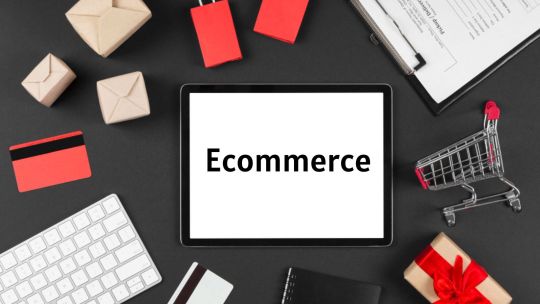
In the fast-paced digital landscape of today, having a strong online presence is essential for any business looking to thrive. One of the most effective ways to establish and expand your business's online footprint is through ecommerce website development. This unique approach opens doors to global markets, enhances customer experiences, and boosts sales. In this article, we'll delve into the world of ecommerce website development, exploring its key aspects, benefits, and how to create a truly captivating online store.
Introduction
In an era where online shopping has become the norm, having a dynamic and user-friendly custom ecommerce web development can set your business on a path to success. The online marketplace provides unprecedented opportunities to reach a broader audience and engage with customers in ways that traditional brick-and-mortar stores can't match.
Why Ecommerce Matters
Ecommerce isn't just an option; it's a necessity. The convenience it offers to customers, combined with the global reach it provides to businesses, makes it an indispensable tool in today's business landscape. Whether you're a small boutique or a large corporation, ecommerce levels the playing field and enables you to compete on a global scale.
Building a Solid Foundation
Choosing the Right Platform
Selecting the right ecommerce platform is the cornerstone of your online success. Options like Shopify, WooCommerce, and Magento offer varying degrees of customization and scalability. Evaluate your business's needs and goals to determine the platform that aligns best with your vision.
User-Friendly Interface
A clutter-free and intuitive interface is crucial for guiding visitors seamlessly through your website. The user experience should be smooth and uncomplicated, from the moment they land on your site to the final checkout.
Responsive Design for All Devices
With mobile usage on the rise, having a responsive design is paramount. Your website should adapt flawlessly to various screen sizes, ensuring a consistent experience for users, regardless of the device they're using.
Design that Converts
Visual Appeal and Branding
Your website's design should reflect your brand identity and resonate with your target audience. A visually appealing and cohesive design enhances your credibility and encourages visitors to explore further.
Intuitive Navigation
Simple and logical navigation helps visitors find what they're looking for without frustration. Categories and products should be organized logically, making the browsing experience efficient and enjoyable.
High-Quality Product Imagery
In the absence of physical touch, high-quality product images become your customers' touchpoints. Clear, detailed images from multiple angles instill confidence and allow customers to make informed purchasing decisions.
Seamless Shopping Experience
Streamlined Checkout Process
Minimize cart abandonment rates by simplifying the checkout process. A concise and straightforward checkout ensures a higher conversion rate.
Multiple Payment Options
Offer a variety of payment methods to cater to different customer preferences. From credit cards to digital wallets, providing options enhances the convenience of shopping on your site.
Security and Trustworthiness
Display trust badges, security certifications, and clear privacy policies to assure customers that their personal and financial information is safe with you.
Optimizing for Search Engines (SEO)
Keyword Research
Thorough keyword research helps you understand what terms your potential customers are searching for. Incorporate these keywords naturally into your product descriptions, meta tags, and content.
On-Page SEO
Optimize each page for search engines by using appropriate headers, meta descriptions, and alt tags for images. A well-structured site ranks higher in search results.
Fast Loading Speeds
Slow-loading websites drive visitors away. Compress images, utilize browser caching, and choose a hosting provider that ensures fast loading speeds.
Mobile Optimization
Mobile-First Approach
Design your website with mobile users in mind. A mobile-first approach ensures that your site is optimized for smaller screens and touch interactions.
Mobile App Integration
Consider developing a mobile app for your ecommerce store. An app can provide a more personalized and immersive shopping experience for your loyal customers.
Personalization and Customer Engagement
Tailored Recommendations
Implement algorithms that suggest products based on a customer's browsing and purchasing history. Personalized recommendations enhance the shopping experience and increase the likelihood of upsells.
Interactive Features
Incorporate interactive elements like product quizzes, virtual try-ons, or augmented reality features. These engage customers and make their journey on your site more enjoyable.
Managing Inventory and Orders
Real-Time Stock Updates
Ensure that your website reflects accurate stock levels. Real-time updates prevent customers from being disappointed by out-of-stock items.
Order Tracking and Management
Provide customers with the ability to track their orders in real-time. Clear communication about order statuses reduces uncertainty and enhances trust.
Integrating Social Media
Social Selling
Integrate "Buy Now" buttons directly into your social media posts. This streamlined process allows customers to purchase products without leaving their favorite platforms.
Social Media Advertising
Utilize targeted social media advertising to reach potential customers. Platforms like Facebook and Instagram offer advanced targeting options that can boost your sales.
Analyzing and Enhancing Performance
Traffic Analytics
Regularly analyze your website's traffic to identify patterns, popular products, and areas for improvement. Use tools like Google Analytics to gain valuable insights.
Conversion Rate Optimization
Experiment with different strategies to optimize your conversion rates. A/B testing, tweaking call-to-action buttons, and refining product descriptions can make a significant impact.
Benefits of Professional Development
Customization to Suit Your Brand
Enlisting the services of professional developers allows you to create a customized website that aligns perfectly with your brand identity and goals.
Technical Support and Updates
Professional developers provide ongoing technical support and ensure that your website remains up-to-date with the latest features and security patches.
Security Considerations
SSL Certification
Secure Sockets Layer (SSL) certification is crucial for safeguarding customer data during online transactions. A secure site builds trust and credibility.
Data Encryption
Implement strong data encryption to protect customer information from potential threats. Encryption adds an extra layer of security to sensitive data.
Conclusion
In the digital age, a well-crafted ecommerce website development will helpful for businesses of all sizes. It opens the door to a global customer base, enhances customer experiences, and boosts sales. By implementing the strategies and considerations discussed in this article, you can create a unique and compelling online store that stands out in the competitive ecommerce landscape.
1 note
·
View note
Text
ES Group Marketing – Full‑Service Digital & Web Solutions
Since 2003, ES Group Marketing has delivered full-service digital marketing and web development solutions from Fort Dodge, IA. Specializing in SEO, PPC, geofencing, social media, display ads, and responsive web design, we help small and medium-sized businesses drive conversions, improve ROI, and grow online. Transparent, strategic, and results‑focused.
#seo agency near me#digital marketing agency near me#best digital marketing agencies#ppc advertising companies#email marketing advertising agencies#content marketing agencies#ecommerce seo services#marketing company for small business#digital marketing agency in usa#seo link building services#custom website design company#website development company in usa#advertising agency in usa#youtube marketing services#web design and development company in usa#digital marketing des moines#best digital marketing company in usa
2 notes
·
View notes
Text

#custom erp#flutter mobile development#web and mobile app development company#app development services#erp development#digital consulting#ecommerce website development company
3 notes
·
View notes
Text
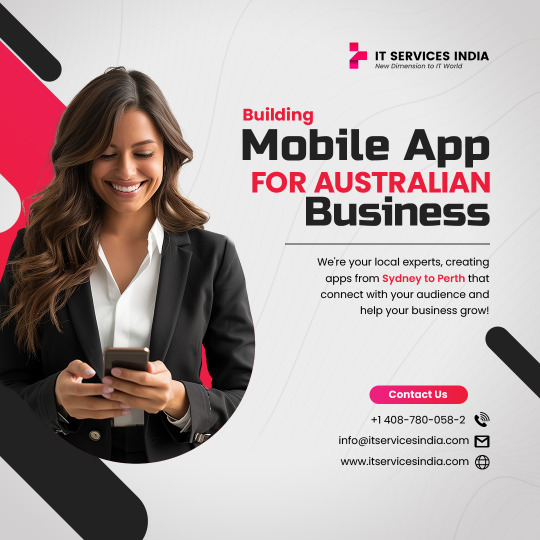
Building a mobile app for your Australian business? We're your local experts! From Sydney to Perth, we create apps that connect with your audience.
Ask us how we can help your business grow!
Visit: https://www.itservicesindia.com/mobile-app-development-australia
Call Now: +14087800582 Emailto: [email protected]
#mobileappdevelopment#mobileappdevelopmentnearme#bestcompanyforappdevelopmentcompany#australiabestcompany#AppDevelopmentCompanyinAustralia#melbournecompany#sydneytopappdevelopmentcompany#ITServicesIndia#Perthtopappdevelopmentcompany#melbourne#mobile app development#php web development company#ecommerce development#hire mobile app developers#android app development services#android app development company#best mobile app development company#custom app development services#mobile app development company
1 note
·
View note
Text
Secure Your Digital Assets with Reliable WordPress Security Services
A secure website is the cornerstone of a successful online presence. Atcuality provides unparalleled WordPress security services to shield your site from cybercriminals and data breaches. Our comprehensive approach includes regular vulnerability scans, plugin and theme updates, and advanced encryption protocols to secure your sensitive information. Whether it's mitigating DDoS attacks or strengthening login security, we employ the latest tools and technologies to keep your WordPress site secure. Trust Atcuality to deliver peace of mind with a secure and seamless online experience.
#ai powered application#ai applications#amazon web services#mobile application development#app development company#mobile app development company#mobile app development#mobile app developers#app design and development#app development#web app development#augmented reality#metaverse#virtual reality#azure cloud services#custom app development#blockchain#cash collection application#cloud security services#cloud security solutions#cloud computing#cloud#custom wordpress development services#wordpress development#web development#website design#web developers#web design#ecommerce website development#digital marketing
1 note
·
View note
Text
Top Magento 2 Website Development Company India
Atlas SoftWeb has solidified its name as one of the best Magento e-commerce development companies with its best practices, expert assistance, and ability to transform your ideas into reality.
Hire Magento Developers from India and Save 65% Cost!

Hire dedicated Magento developers from Atlas SoftWeb and receive high-quality development and support services to ensure that your Magento website consistently provides a high conversion rate and engagement. As experts in Magento development services, we can guide you through every step of the development process right from ideation to deployment. Our team of seasoned experts has hands-on experience with Magento web development solutions to build the website for your niche and as per your specific demands.
Read more: Top Magento 2 Website Development Company India
#magento development company#magento development#magento website development#magento2 development#magento web development#magento ecommerce development#magento development services#magento development agency#custom magento development
1 note
·
View note
Text
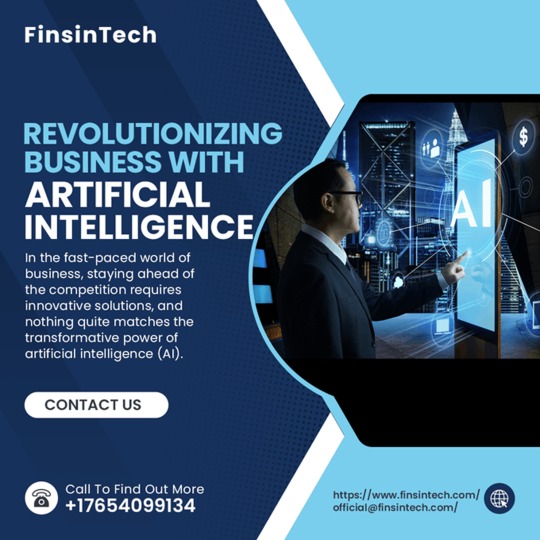
Release the Power of Innovation: A FinsinTech Guide to iOS App Development
The digital landscape is brimming with possibilities, and at the forefront of this revolution lies the power of mobile applications. In this dynamic space, iOS app development reigns supreme, offering unparalleled user experiences and access to a loyal and engaged audience.
If you're a business owner or entrepreneur seeking to capitalize on the immense potential of iOS, FinsinTech is your ideal partner. We're a leading iOS application development company with expertise and a passion for crafting intuitive, user-centric applications that drive engagement and success.
Why Choose FinsinTech for Your iOS App Development Needs?
Unwavering Expertise: Our team of seasoned iOS developers possesses in-depth knowledge of the latest Apple technologies, frameworks, and best practices. We constantly evolve, embracing the newest advancements to deliver cutting-edge solutions that exceed expectations.
Strategic Vision: We do more than just code. To develop an iOS app that flawlessly matches your unique vision, we thoroughly investigate your target market, company goals, and industry trends. We believe in strategic partnerships, working with you to bring your app to life.
Innovation at its Core: We're driven by a relentless pursuit of innovation. Strategic Vision: We do more than just code. To ensure that the iOS app we develop for you precisely matches your unique vision, we thoroughly investigate your target market, business goals, and industry trends.
Unmatched Quality: We take immense pride in our commitment to quality. Our rigorous development process ensures robust, secure, and scalable iOS apps that stand the test of time. We employ stringent testing methodologies to guarantee seamless performance and user satisfaction.
A Collaborative Journey: We believe in open communication and transparency. We keep you informed throughout development, ensuring you're involved and empowered at every step. Your feedback is invaluable, and we actively incorporate it to refine and perfect your iOS app.
From Concept to App Store: Our iOS Application Development Process Finding your vision, target market, and specific needs are the first steps in the discovery and planning process. We uncover opportunities and potential difficulties by doing in-depth competitor and market research.
Wireframing & Prototyping: We translate your vision into tangible form, creating wireframes and prototypes that illustrate the app's user interface and functionality. This collaborative process allows for iterative refinement and ensures we're on the same page.
Development & Design: Our expert developers bring your app to life, using the latest Apple technologies and best practices to craft a secure, scalable, and efficient application. Our design team prepares a stunning, intuitive user interface that delights your users.
Testing & Quality Assurance: We employ rigorous testing methodologies to identify and address bugs or issues throughout the development process. We ensure your app is thoroughly tested for performance, compatibility, and security before launch.
App Store Launch & Optimization: We walk you through the software Store submission process, ensuring your software complies with Apple's requirements and gets the most exposure possible.
We also provide ongoing optimization strategies to improve your app's ranking and user acquisition.
FinsinTech: Your Trusted Partner in iOS App Development Success
At FinsinTech, we believe that iOS mobile app development is more than just lines of code. It's about crafting experiences that connect, engage, and empower users. We are committed to assisting companies of all kinds in realizing the enormous potential of iOS and accomplishing their digital objectives. So, if you're ready to embark on your iOS app development journey, FinsinTech is your ideal companion. We're not just developers but your strategic partners, committed to your success.
Contact us today for a free consultation, and let's discuss how we can transform your vision into a thriving iOS app.
Let's create the next big thing in the iOS app universe!
We hope this blog post has been informative and insightful. If you have any questions about iOS mobile app development or FinsinTech's services, please don't hesitate to contact us.
We look forward to hearing from you!
#ecommerce#seo services#ai generated#ai#artificial intelligence#finsintech#ios app development#web app development#custom application#custom software development
3 notes
·
View notes
Text
Explore the advantages and disadvantages of using Shopify for dropshipping in 2024. Learn about Shopify's user-friendly interface, customization options, and scalability, along with considerations such as cost, transaction fees, and competition. Consider hiring Webgarh Solutions for expert Shopify dropshipping store development services to maximize your e-commerce success.
#shopify#dropshipping#ecommerce#shopify store#customization#shopify apps#payment gateways#ecommerce platforms#web development#shopify development#webgarh solutions
2 notes
·
View notes
Text
CAKE PHP DEVELOPMENT
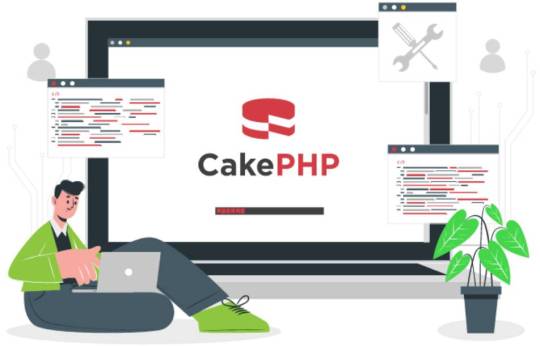
What is CakePHP?
CakePHP is an open-source web framework written in PHP scripting language for web development based on the core PHP framework and MVC architecture. MVC architecture mostly Centre on model, view, and controller of the specific project to give logical separation of code from the end user.
CakePHP was created by Michal Tatarynowicz in April Year 2005. The framework gives a strong base for your application. It can hold each aspect, from the user’s beginning request all the way to the final supply of a web page.
And since the framework follows the fundamental of MVC, it permits you to simply customize and expand most aspects of your application.
The CakePHP also gives a simple organizational structure, from filenames to database table names, keeping your whole application constant and logical. This concept is easy but impressive. Go around with the protocol and you’ll always know absolutely where things are and how they’re arranged.
Here’s a quick list of CakePHP features such as:
It follows MVC architecture
Rapid development
Application scaffolding
Active, friendly community
Built-in validations
Secure, scalable, and stable
Flexible licensing
Localization
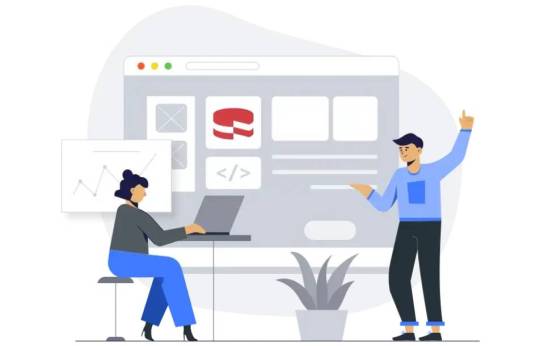
Why select CakePHP for website development:
1. Compatible : The Cakephp is compatible with several versions of PHP as well as with the in demand website directories.
2. Customizable Elements : The Elements residing inside the framework are simple to redesign and understand.
3. No Download Required : There is no requiring downloading the whole package as you can get started by directly installing the database.
4. Code Reusability : Coding from scratch isn’t needed as code-written can be used so many times in the project decrease time and effort.
5. MVC Pattern : Huge apps need a structured pattern to get started, which CakePHP offers with its special MVC pattern.
6. Code Simplicity : Easy code written in PHP can do the trick for you. The framework is simple, successful and high on areas like security and session handling.
“Make use of CakePHP means your core application’s is well checked and is being always improved.”
At Kudosta, Website Design and Development Company we provide CakePHP web services such as Framework Customization, CakePHP Module Development, CakePHP Migration and lots more. Try to deliver the best of CakePHP web services in the market.
We have worked for several big scale as well as medium scale enterprises. Our team of skilled CakePHP programmers work with passion, practice new techniques offers you the best depending on your project’s needs.
#php development#ecommerce web design#custom web design#wordpress website#custom web development#seo services#wordpress development#web design#web development#custom web#laravel#react#nodejs#cakephp
4 notes
·
View notes
Text
#Hire India's remote tech talent#Hire Remote Developers India#Talent acquisition in India#The Best Developers Talent For Hire In India#Top Hire Remote Developers India#Best freelance websites for web developers#Talent hire consultancy services web developers#Hire best ecommerce website development#Best web development services#Hire Developers & Programmers in India#Hire software developers#Hire best developers in India#Mobile & Web App Development Services#Top Mobile App Development Companies#Web and Mobile App Development Company#Best website Development Companies in India#Custom Web Application Development Services#Custom Web Application Development#Custom Web Development Services Company India#Custom Web Application Development Services in Delhi#Mobile & Web App Development Services in India#Best Mobile & Web App Development Services in Delhi#software engineering#programming#marketing#python#machine learning#coding#linux#artificial intelligence
2 notes
·
View notes
Text
What Is Ecommerce Website Development? A Complete Guide
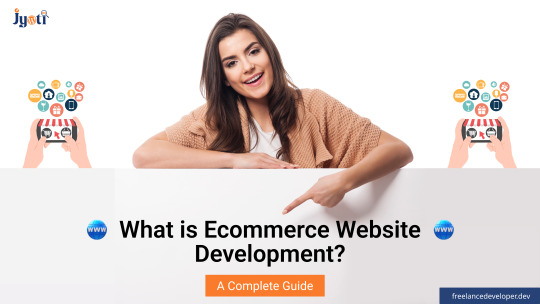
Explore the world of eCommerce website development with my comprehensive guide. Learn about the ins and outs of eCommerce website development and how to create a successful online store.
#ecommerce website#ecommerce web design#ecommerce developer#build ecommerce website#ecommerce development#custom ecommerce development
2 notes
·
View notes
Text
7 MOST POPULAR TYPES OF WEBSITES AND WHAT THEY INCLUDE

According to research, 38% of people will stop interacting if a website is poorly designed. This means that you should make sure that your website layout sends the right message and answers all your target audience’s questions.
There are several types of websites that you can go for if you want to establish and improve your online presence in the market. Each one of them is designed to satisfy a specific purpose. So, which one should you go for? How can the right website design and layout help your business boom?
This article will explain the 7 most popular types of websites, their purposes, and features. Keep reading to learn more about them.
7 MOST POPULAR TYPES OF WEBSITES
There are currently more than 1 billion websites on the internet, and the number increases all the time. Some of them are definitely more successful than others, so it’s essential to pick the right website design for your business.
Today, web development has become easier, so you can just log into a free website builder and have a functioning website. However, this doesn’t mean that you’ll be able to use the website to elevate your online presence.
You should ask yourself questions like what should my website tell my target audience? How can I use my website design and layout to send a message to my prospects?
Each type of website has specific features and purposes. We’ll discuss the most popular ones in this section.
1. Business Website
Purpose
Tell your target audience why they should work with you
Features
List of products and services
An About Page to tell the customers about your company
Contact information
A call to action
This is one of the most common website types. The company will share examples of past work and customer feedback and explain how to make an order or contact for more questions. In this type, visual branding is crucial, as the website layout should tell your target audience what your brand is all about. The design should be simple to answer as many questions as possible, making sure that the logo and typography complement the company’s message. Customers should be able to get the information they need without scrolling various pages.

2. eCommerce Website
Purpose
Sell online products and services
Features
High-quality images that show the products and services
Easy to navigate with clear sections
Details about your business, shipment, returns, and refunds should be clearly listed
Secure checkout and transactions
eCommerce websites are quite popular because the company sets up a website to sell its products and services online. Once you have an eCommerce website, you’ll have a functioning online shop that you can use with the physical store to increase your sales.
There should be a section for customer service and an About Us section that tells your potential customers more about your business. Just like a business website, sticking to a consistent visual branding strategy is extremely important. Moreover, it should be simple so it doesn’t confuse users.
3. Blog/News Website
Purpose
Provide valuable information about the industry or company
Features
Article lists
Tags for easy navigation
Updated posts
Can lead to an online store
Messages section for more information
The blog or news website should be related to your company’s niche and market, and it should be updated regularly with new posts or the latest news in your industry. The purpose of this website is to deliver valuable content that your target customers will appreciate. Think of what your target customers ask about, how to use your product, and what other products they can use to have a better experience. All these topics can provide excellent content for your blog.

4. Portfolio Website
Purpose
Display samples of work to attract customers
Features
High-quality images
Work samples
Contact information
Creating a portfolio website involves listing information about past projects to promote someone’s business. It can be used by individuals, especially those who work in a creative field, or by agencies and companies. This type of website can lead to an online shop or just display the contact information that customers need to get to the physical store or to contact the website’s owner.
It should be easy to navigate and needs consistent updates. Your target audience should see that you’re engaging in successful projects to consider you for an upcoming one.
5. Service Provider Website
Purpose
Offer an online service
Features
Easy to use
Payment options for subscriptions
This website will work for you if you offer an online service, like converting files to other types, a photo editor, or a grammar checker. The website should be easy to understand, and visitors should be able to access the tool instantly. In most cases, you can offer a limited version of your service that users can try for free. After that, they should be able to pay a subscription to access the tool’s full potential.
6. Landing Page
Purpose
The main part of a marketing campaign that leads to other pages where customers can learn more about your brand
Features
A single call to action
A brief description of the products and services
A clear visual brand
The landing page is a one-page website that your target audience reaches when they click the company’s link. Therefore, the website’s design should stick to the brand’s visual identity and should be simple and to the point. The landing page should work for lead generation, so customers can download an online catalog or learn more about the company’s products through a newsletter.
7. Wiki/Database Website
Purpose
A reference or index that provides a lot of information
Features
Easy search functions
Lots of linked pages
Ability to add comments or edit
This website serves as an index that shows a lot of information. When your target audience clicks any link, they’ll get transferred to another page that shows detailed information about your products or services. A database website can also be accessible to users who can contribute to the added content.
LET THE EXPERTS HELP
Are you wondering about how to build a website that serves your business purpose? Let our experts help you build the one that will improve your online presence and attract the right audience. A successful website starts with a successful web design, so click here to get yours today.
#website design#Types of websites#Popular website categories#Website purposes#Web development#online presence#Website layout#Target audience#Business website#eCommerce website#Blog/News website#Portfolio website#Service provider website#Landing page#Wiki/Database website#Web design and layout#Online shop#High-quality images#Customer feedback#Visual branding#Call to action#Easy navigation#Valuable content#Industry news#Marketing campaign#Lead generation#User engagement#Reference website#Information index#Search functions
1 note
·
View note
Text
7 Types of Logos: How to Use Them for Your Custom Ecommerce Website
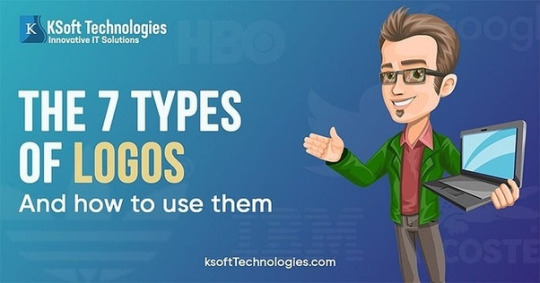
A logo is an image that symbolizes your business. But did you know there are 7 different types of logos?
Though they’re all a combination of typography and images, each type of logo gives your brand a different feel. And since your logo is the first thing new customers will see, especially on a custom ecommerce website, you want to make sure you get it right.
Here are the 7 types of logos you need to know about:
1. Monogram (or lettermark) logos 2. Wordmark logos 3. Pictorial mark logos 4. Abstract logo marks 5. Mascot logos 6. The combination mark 7. The emblem
Want to know how to choose the best logo type for your business? Read on!
1. Monogram logos (or lettermarks)
Monogram logos or lettermarks are logos that consist of letters, usually brand initials. IBM, CNN, HP, HBO… Noticing a pattern, yes? They’re the initialisms of a few famous businesses with rather lengthy names. With 2 or 3 words to remember, they’ve each turned to using their initials for brand-identification purposes. So it makes perfect sense for them to use monograms — sometimes called lettermark logos — to represent their organizations.
A lettermark is a typography-based logo that’s comprised of a few letters, usually a company’s initials. The lettermark is all about simplicity. By utilizing just a few letters lettermark logos are effective at streamlining any company brand if they have a long name. For example, how much easier is it to say — and remember — NASA versus the National Aeronautics and Space Administration?
Because the focus is on initials, the font you choose (or create) is very important to make sure your logo is not only on-theme with what your company does, but also legible when you print on business cards. Also, if you’re not an established business already you may want to add your full business name below the logo so people can begin to learn who you are right away.
2. Wordmarks (or logotypes)
Similar to a lettermark, a wordmark or logotype is a font-based logo that focuses on a business’ name alone. Think Visa and Coca-Cola. Wordmark logos work really well when a company has a succinct and distinct name. Google’s logo is a great example of this. The name itself is catchy and memorable so, when combined with strong typography, the logo helps create strong brand recognition.
Also, like with a lettermark logo, typography will be an important decision. Since the focus will be on your name, you’ll want to pick a font — or create a font — that captures the essence of what your business does. For example, fashion labels tend to use clean, elegant fonts that feel high-end, while legal or government agencies almost always stick to traditional, “heavier” text that feels secure.
When to use lettermark and wordmark logos:
Consider a lettermark logo if your business happens to have a long name. Condensing the business name into initials will help simplify your design and likewise, customers will have an easier time recalling your business and your logo.
A wordmark is a good decision if you’re a new business and need to get your name out there, just make sure that name is short enough to take advantage of the design. Anything too long can look too cluttered.
A wordmark logo is a good idea if you have a distinct business name that will stick in customers’ minds. Having your name in a great, designed font will make your brand all the stickier.
Both lettermark and wordmark logos are easy to replicate across marketing material and branding thus making them highly adaptable options for a new, and developing, business.
Remember that you’ll want to be scrupulous when creating a lettermark or a wordmark. Your business name in a font alone likely won’t be distinct enough to capture the nuance of your brand. So make sure you hire a professional who’ll have an eye for detail.
3. Pictorial marks (or logo symbols)
A pictorial mark (sometimes called brand mark or logo symbol) is an icon — or graphic-based logo. It’s probably the image that comes to mind when you think “logo”: the iconic Apple logo, the Twitter bird, the Target bullseye. Each of these companies’ logos is so emblematic, and each brand so established, that the mark alone is instantly recognizable. A true brand mark is only an image. Because of this, it can be a tricky logo type for new companies, or those without strong brand recognition, to use.
mark is what image to choose. This is something that will stick with your company its entire existence. You need to think about the broader implications of the image you choose: do you want to play on your name (like John Deere does with their deer logo)? Or are you looking to create deeper meaning (think how the Snapchat ghost tells us what the product does)? Or do you want to evoke an emotion (as the World Wildlife foundation does with their stylized image of a panda — an adorable and endangered species)?
4. Abstract logo marks
An abstract mark is a specific type of pictorial logo. Instead of being a recognizable image — like an apple or a bird — it’s an abstract geometric form that represents your business. A few famous examples include the BP starburst-y logo, the Pepsi divided circle and the strip-y Adidas flower. Like all logo symbols, abstract marks work really well because they condense your brand into a single image. However, instead of being restricted to a picture of something recognizable, abstract logos allow you to create something truly unique to represent your brand.
The benefit of an abstract mark is that you’re able to convey what your company does symbolically, without relying on the cultural implications of a specific image. Through color and form, you can attribute meaning and cultivate emotion around your brand. (As an example, think about how the Nike swoosh implies movement and freedom).
5. Mascots
Mascot logos are logos that involve an illustrated character. Often colorful, sometimes cartoonish, and most always fun, the mascot logo is a great way to create your very own brand spokesperson — er, spokes-character(?).
A mascot is simply an illustrated character that represents your company. Think of them as the ambassador for your business. Famous mascots include the Kool-Aid Man, KFC’s Colonel and Planter’s Mr. Peanut.
Mascots are great for companies that want to create a wholesome atmosphere by appealing to families and children. Think of all those mascots at sporting events and the great dynamic they create by getting involved with the audience!
When to use picture and symbol logos:
A pictorial mark alone can be tricky. It’s effective if you already have an established brand but that’s not a hard and strict rule. You can use brandmarks to your advantage to convey what your business does graphically if your name is too long, and they can also be used effectively to convey a desired idea or emotion.
Pictorial and abstract marks also work quite well for global commerce if, for example, a business name doesn’t lend itself well to translation.
A pictorial mark however may not be the best idea if you anticipate changes to your business model in the future. You may start off selling pizzas and use a pizza in your logo but what happens when you start to selling sandwiches or burgers, or even produce?
Abstract marks allow you to create a completely unique image for your business, but are best left to design professionals who understand how color, shape and structure combine to create meaning.
Think about creating a mascot if you are trying to appeal to young children or families. One big benefit of a mascot is it can encourage customer interaction so it’s a great tool for social media marketing as well as real-world marketing events. I mean, who doesn’t want to take a selfie with the Pillsbury Doughboy?
Remember that a mascot is only one part of a successful logo and brand, and you may not be able to use it across all your marketing material. For example, a highly detailed illustration may not print well on a business card. So put some consideration in the next type of logo design below, the combination mark.
6. The combination mark
A combination mark is a logo comprised of a combined wordmark or lettermark and a pictorial mark, abstract mark, or mascot. The picture and text can be laid out side-by-side, stacked on top of each other, or integrated together to create an image. Some well-known combination mark logos include Doritos, Burger King and Lacoste.
Because a name is associated with the image, a combination mark is a versatile choice, with both the text and icon or mascot working together to reinforce your brand. With a combination mark, people will also begin to associate your name with your pictorial mark or mascot right away! In the future, you may be able to rely exclusively on a logo symbol, and not have to always include your name. Also, because the combination of a symbol and text creates a distinct image together, this type of logo is usually easier to trademark than a pictorial mark alone.
7. The emblem
An emblem logo consists of font inside a symbol or an icon; think badges, seals and crests. These logos tend to have a traditional appearance about them that can make a striking impact, thus they are often the go-to choice for many schools, organizations or government agencies. The auto industry is also very fond of emblem logos. While they have a classic style, some companies have effectively modernized the traditional emblem look with logo designs fit for the 21st century (think of Starbucks’ iconic mermaid emblem, or Harley-Davidson’s famous crest).
But because of their lean towards higher detail, and the fact that the name and symbol are rigidly entwined, they can be less versatile than the aforementioned types of logos. An intricate emblem design won’t be easy to replicate across all branding. For business cards, a busy emblem may shrink so small before it becomes too difficult to read. Also, if you plan on embroidering this type of logo on hats or shirts, then you’ll really have to create a design that is on the simple side or it just won’t be possible. So as a rule keep your design uncomplicated and you’ll walk away with a strong, bold look that’ll make you look like the consummate professional.
When to use a combination mark or emblem logos:
A combination mark is a great choice for pretty much any business out there. It’s versatile, usually highly unique, and the most popular choice of logo among prominent companies. (We also see A LOT of combination mark logos get created on 99designs.)
An emblem’s traditional look might be favored by lots of public agencies and schools but it can also serve any up-and-coming private business quite well, especially those in the food and beverage industry: think beer labels and coffee cups (Starbucks!). But remember to play it safe when it comes to detail. You still want a design you’ll be able to print neatly across all of your marketing material.
There you have it. A breakdown of all the types of logos out there.
Want more logo design tips? Learn how to design a logo here.
#app development services#custom erp#web and mobile app development company#ecommerce development services#flutter mobile development#digital consulting#custom ecommerce website#erp development
3 notes
·
View notes